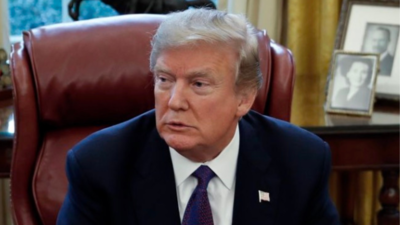How the Trump administration uses a flawed DHS report to justify sweeping US education visa restrictions

The Trump administration has used a report by the Department of Homeland Security (DHS) to implement new restrictions on immigration and international student visas. The DHS overstay report, which is published annually, has been cited as justification for a travel ban issued on June 4, 2025, and is expected to support further proposed restrictions targeting student visa holders.According to a National Foundation for American Policy (NFAP) analysis, the DHS overstay report does not contain actual overstay rates, but rather upper-bound estimates of individuals whose departures from the US could not be verified. Despite this, the administration has relied on the report to enforce bans on immigration and student entries from 19 countries.Overstay figures include inaccurate and outdated recordsThe DHS report includes individuals who have overstayed their visas as well as those whose departures were not recorded. Demographer Robert Warren explained that the figures include “both actual overstays and unrecorded departures,” as quoted by Forbes. The DHS itself acknowledges that some individuals listed as overstays may have departed the country or changed their legal status but are still classified as overstays in the report.In some cases, the report lists people as overstays due to data matching issues. As time passes, DHS systems often update and correctly identify these individuals as having lawfully remained in or departed from the US. For instance, the “suspected in-country overstay” rate for student and exchange visitors at the start of FY 2023 was 3.5%. Fifteen months later, this figure dropped by 42%, to 2.03%, as reported by Forbes.International students misclassified and misrepresentedThe DHS report also overstates figures due to individuals changing immigration status within the US. These include people who married US citizens, applied for asylum, received Temporary Protected Status, or obtained lawful permanent residence. In one example, cited by Forbes, a protest leader named Mahmoud Khalil was arrested under the assumption that he was on a student visa, though he had already become a lawful permanent resident through marriage.In the FY 2023 report, overstay rates for students from several countries were based on small numbers. Cuba and Burundi had only 24 alleged overstays, and Laos had just 12. Despite the minimal figures, these countries were included in the travel ban.Fluctuating data cited to justify proposed visa rule changesThe Trump administration is expected to use the DHS report to support a proposed rule to eliminate the “duration of status” policy for students and exchange visitors, replacing it with a fixed time period. A similar rule was proposed in 2020. According to Forbes, the 2020 proposal would limit stays to two years for students from countries with a student overstay rate above 10%.However, NFAP notes that these overstay rates vary significantly from year to year. For example, Kenya’s overstay rate dropped by 40% between FY 2022 and FY 2023, while Rwanda’s rate fell by 44% over the same period. This inconsistency makes it difficult to use the figures for long-term policy decisions, according to data cited by Forbes.Travel ban based on inconsistent and inflated dataThe June 4, 2025 travel ban applies to 19 countries. Twelve are fully restricted from obtaining US immigrant and temporary visas, while seven face partial restrictions. As reported by Forbes, the proclamation cited overstay rates as a reason for the ban, even though many of the individuals listed had either left the country or changed their status lawfully.NFAP found that more than 70 countries not included in the travel ban had higher student overstay rates than some of the banned countries, including Iran and Venezuela. Liberia and Djibouti, for example, had higher B1/B2 visa overstay rates than several nations included in the proclamation.As quoted by Forbes, the NFAP concluded that “the overstay report allowed for a veneer of data to justify predetermined policy decisions.”TOI Education is on WhatsApp now. Follow us here.





